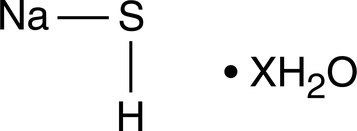Chemicals
Showing 36001–36150 of 41137 results
-
sn-glycero-3-Phosphocholine (sn-glycero-3-PC) is a nootropic phospholipid, a precursor to choline biosynthesis, and an intermediate in the metabolism of phosphatidylcholine.{32447} In vivo, sn-glycero-3-PC is converted to phosphorylcholine, a metabolically active form of choline that increases acetylcholine synthesis and release in rat hippocampus. It prevents scopolamine-induced amnesia in a passive avoidance test in rats and exerts neuroprotective effects in models of altered cholinergic neurotransmission and models of brain vascular injury.{32447,45044}
Brand:CaymanSKU:20736 -Available on backorder
sn-glycero-3-Phosphocholine (sn-glycero-3-PC) is a nootropic phospholipid, a precursor to choline biosynthesis, and an intermediate in the metabolism of phosphatidylcholine.{32447} In vivo, sn-glycero-3-PC is converted to phosphorylcholine, a metabolically active form of choline that increases acetylcholine synthesis and release in rat hippocampus. It prevents scopolamine-induced amnesia in a passive avoidance test in rats and exerts neuroprotective effects in models of altered cholinergic neurotransmission and models of brain vascular injury.{32447,45044}
Brand:CaymanSKU:20736 -Available on backorder
sn-glycero-3-Phosphocholine (sn-glycero-3-PC) is a nootropic phospholipid, a precursor to choline biosynthesis, and an intermediate in the metabolism of phosphatidylcholine.{32447} In vivo, sn-glycero-3-PC is converted to phosphorylcholine, a metabolically active form of choline that increases acetylcholine synthesis and release in rat hippocampus. It prevents scopolamine-induced amnesia in a passive avoidance test in rats and exerts neuroprotective effects in models of altered cholinergic neurotransmission and models of brain vascular injury.{32447,45044}
Brand:CaymanSKU:20736 -Available on backorder
sn-glycero-3-Phosphocholine (sn-glycero-3-PC) is a nootropic phospholipid, a precursor to choline biosynthesis, and an intermediate in the metabolism of phosphatidylcholine.{32447} In vivo, sn-glycero-3-PC is converted to phosphorylcholine, a metabolically active form of choline that increases acetylcholine synthesis and release in rat hippocampus. It prevents scopolamine-induced amnesia in a passive avoidance test in rats and exerts neuroprotective effects in models of altered cholinergic neurotransmission and models of brain vascular injury.{32447,45044}
Brand:CaymanSKU:20736 -Available on backorder
SNAP is an S-nitrosothiol which serves as a NO donor and a potent vasodilator. Its stability in solution varies from seconds to hours depending on temperature, buffer composition and metal content.{5064,4274,3632,1285} At pH 6-8 and 37°C, the half-life of SNAP is approximately six hours in the presence of transition metal ion chelators.{3055,1285}
Brand:CaymanSKU:82250 - 10 mgAvailable on backorder
SNAP is an S-nitrosothiol which serves as a NO donor and a potent vasodilator. Its stability in solution varies from seconds to hours depending on temperature, buffer composition and metal content.{5064,4274,3632,1285} At pH 6-8 and 37°C, the half-life of SNAP is approximately six hours in the presence of transition metal ion chelators.{3055,1285}
Brand:CaymanSKU:82250 - 100 mgAvailable on backorder
SNAP is an S-nitrosothiol which serves as a NO donor and a potent vasodilator. Its stability in solution varies from seconds to hours depending on temperature, buffer composition and metal content.{5064,4274,3632,1285} At pH 6-8 and 37°C, the half-life of SNAP is approximately six hours in the presence of transition metal ion chelators.{3055,1285}
Brand:CaymanSKU:82250 - 25 mgAvailable on backorder
SNAP is an S-nitrosothiol which serves as a NO donor and a potent vasodilator. Its stability in solution varies from seconds to hours depending on temperature, buffer composition and metal content.{5064,4274,3632,1285} At pH 6-8 and 37°C, the half-life of SNAP is approximately six hours in the presence of transition metal ion chelators.{3055,1285}
Brand:CaymanSKU:82250 - 50 mgAvailable on backorder
SNC 80 is a selective nonpeptide agonist of the δ-opioid receptor (Ki = 0.18 nM, IC50 = 2.73 nM) that is over 2,000-fold less effective at the μ-opioid receptor.{25516,25513,25515} It effectively activates µ/δ receptor heteromers (EC50 = 52.8 nM) but not κ/δ or μ/κ heteromers.{25524} SNC 80 has antinociceptive as well as pro-convulsant effects in vivo.{25516,25513,25514}
Brand:CaymanSKU:-SNC 80 is a selective nonpeptide agonist of the δ-opioid receptor (Ki = 0.18 nM, IC50 = 2.73 nM) that is over 2,000-fold less effective at the μ-opioid receptor.{25516,25513,25515} It effectively activates µ/δ receptor heteromers (EC50 = 52.8 nM) but not κ/δ or μ/κ heteromers.{25524} SNC 80 has antinociceptive as well as pro-convulsant effects in vivo.{25516,25513,25514}
Brand:CaymanSKU:-SNOB 1 Reagent is a biotinylated probe for detecting S-nitrosylated proteins in a single step. S-Nitrosylated binding (SNOB) proceeds rapidly on surface proteins or cell lysates under normal physiological conditions. Proteins tagged with SNOB 1 Reagent can be analyzed using avidin-linked probes (e.g., by immunoblot) or by mass spectrometry.
Brand:CaymanSKU:-Out of stock
SNOB 1 Reagent is a biotinylated probe for detecting S-nitrosylated proteins in a single step. S-Nitrosylated binding (SNOB) proceeds rapidly on surface proteins or cell lysates under normal physiological conditions. Proteins tagged with SNOB 1 Reagent can be analyzed using avidin-linked probes (e.g., by immunoblot) or by mass spectrometry.
Brand:CaymanSKU:-Out of stock
SNOB 1 Reagent is a biotinylated probe for detecting S-nitrosylated proteins in a single step. S-Nitrosylated binding (SNOB) proceeds rapidly on surface proteins or cell lysates under normal physiological conditions. Proteins tagged with SNOB 1 Reagent can be analyzed using avidin-linked probes (e.g., by immunoblot) or by mass spectrometry.
Brand:CaymanSKU:-Out of stock
Cyclin-dependent kinases (CDKs) are key regulators of cell cycle progression and are therefore promising targets for cancer therapy. SNS-032 is an ATP-competitive inhibitor of Cdk9, 2, and 7 with IC50 values of 4, 38, and 62 nM, respectively.{29268} It is selective for these kinases and displays no additional activity against a panel of 190 kinases (IC50s = >1,000 nM).{29268} SNS-032 can block the cell cycle, inhibit transcription, and induce apoptosis in multiple myeloma RPMI-8226 cells with an IC90 value of 0.3 µM.{29269} This compound has been shown to induce apoptosis by inhibiting the transcription of the anti-apoptotic proteins, Mcl-1 and XIAP.{29270}
Brand:CaymanSKU:-Available on backorder
Cyclin-dependent kinases (CDKs) are key regulators of cell cycle progression and are therefore promising targets for cancer therapy. SNS-032 is an ATP-competitive inhibitor of Cdk9, 2, and 7 with IC50 values of 4, 38, and 62 nM, respectively.{29268} It is selective for these kinases and displays no additional activity against a panel of 190 kinases (IC50s = >1,000 nM).{29268} SNS-032 can block the cell cycle, inhibit transcription, and induce apoptosis in multiple myeloma RPMI-8226 cells with an IC90 value of 0.3 µM.{29269} This compound has been shown to induce apoptosis by inhibiting the transcription of the anti-apoptotic proteins, Mcl-1 and XIAP.{29270}
Brand:CaymanSKU:-Available on backorder
Cyclin-dependent kinases (CDKs) are key regulators of cell cycle progression and are therefore promising targets for cancer therapy. SNS-032 is an ATP-competitive inhibitor of Cdk9, 2, and 7 with IC50 values of 4, 38, and 62 nM, respectively.{29268} It is selective for these kinases and displays no additional activity against a panel of 190 kinases (IC50s = >1,000 nM).{29268} SNS-032 can block the cell cycle, inhibit transcription, and induce apoptosis in multiple myeloma RPMI-8226 cells with an IC90 value of 0.3 µM.{29269} This compound has been shown to induce apoptosis by inhibiting the transcription of the anti-apoptotic proteins, Mcl-1 and XIAP.{29270}
Brand:CaymanSKU:-Available on backorder
Cyclin-dependent kinases (CDKs) are key regulators of cell cycle progression and are therefore promising targets for cancer therapy. SNS-032 is an ATP-competitive inhibitor of Cdk9, 2, and 7 with IC50 values of 4, 38, and 62 nM, respectively.{29268} It is selective for these kinases and displays no additional activity against a panel of 190 kinases (IC50s = >1,000 nM).{29268} SNS-032 can block the cell cycle, inhibit transcription, and induce apoptosis in multiple myeloma RPMI-8226 cells with an IC90 value of 0.3 µM.{29269} This compound has been shown to induce apoptosis by inhibiting the transcription of the anti-apoptotic proteins, Mcl-1 and XIAP.{29270}
Brand:CaymanSKU:-Available on backorder
SNS-062 is an inhibitor of Bruton’s tyrosine kinase (BTK; IC50s = 4.6 and 1.1 nM for wild-type and BTKC481S, respectively).{53166} It also binds to IL2-inducible T cell kinase (Itk; Kd = 2.2 nM) and nine other kinases (Kds = 50 value of 50 nM. It inhibits BTK phosphorylation in B cells isolated from the whole blood of patients with chronic lymphocytic leukemia in a dose-dependent manner.{53166}
Brand:CaymanSKU:29200 - 1 mgAvailable on backorder
SNS-062 is an inhibitor of Bruton’s tyrosine kinase (BTK; IC50s = 4.6 and 1.1 nM for wild-type and BTKC481S, respectively).{53166} It also binds to IL2-inducible T cell kinase (Itk; Kd = 2.2 nM) and nine other kinases (Kds = 50 value of 50 nM. It inhibits BTK phosphorylation in B cells isolated from the whole blood of patients with chronic lymphocytic leukemia in a dose-dependent manner.{53166}
Brand:CaymanSKU:29200 - 10 mgAvailable on backorder
SNS-062 is an inhibitor of Bruton’s tyrosine kinase (BTK; IC50s = 4.6 and 1.1 nM for wild-type and BTKC481S, respectively).{53166} It also binds to IL2-inducible T cell kinase (Itk; Kd = 2.2 nM) and nine other kinases (Kds = 50 value of 50 nM. It inhibits BTK phosphorylation in B cells isolated from the whole blood of patients with chronic lymphocytic leukemia in a dose-dependent manner.{53166}
Brand:CaymanSKU:29200 - 25 mgAvailable on backorder
SNS-062 is an inhibitor of Bruton’s tyrosine kinase (BTK; IC50s = 4.6 and 1.1 nM for wild-type and BTKC481S, respectively).{53166} It also binds to IL2-inducible T cell kinase (Itk; Kd = 2.2 nM) and nine other kinases (Kds = 50 value of 50 nM. It inhibits BTK phosphorylation in B cells isolated from the whole blood of patients with chronic lymphocytic leukemia in a dose-dependent manner.{53166}
Brand:CaymanSKU:29200 - 5 mgAvailable on backorder
SNS-314 is a pan-Aurora kinase inhibitor (IC50s = 9, 31, and 3.4 nM for Aurora A, B, and C, respectively).{35161,35244} In a panel of 219 kinases, SNS-314 also inhibits TRKB, TRKA, FLT4, FMS, DDR2, AXL, and C-RAF (IC50s = 5-100 nM).{35161} SNS-314 inhibits Aurora B phosphorylation of histone H3 in HCT116 human colorectal carcinoma cells in vitro (EC50 = <16 nM) and in a mouse xenograft model at a dose of 50 mg/kg. It also inhibits tumor growth in A2780 ovarian, A375 melanoma, H1299 lung, MDA-MB-231 breast, and PC3 prostate cancer mouse xenograft models when administered biweekly for six weeks at a dose of 170 mg/kg.{35244}
Brand:CaymanSKU:-SNS-314 is a pan-Aurora kinase inhibitor (IC50s = 9, 31, and 3.4 nM for Aurora A, B, and C, respectively).{35161,35244} In a panel of 219 kinases, SNS-314 also inhibits TRKB, TRKA, FLT4, FMS, DDR2, AXL, and C-RAF (IC50s = 5-100 nM).{35161} SNS-314 inhibits Aurora B phosphorylation of histone H3 in HCT116 human colorectal carcinoma cells in vitro (EC50 = <16 nM) and in a mouse xenograft model at a dose of 50 mg/kg. It also inhibits tumor growth in A2780 ovarian, A375 melanoma, H1299 lung, MDA-MB-231 breast, and PC3 prostate cancer mouse xenograft models when administered biweekly for six weeks at a dose of 170 mg/kg.{35244}
Brand:CaymanSKU:-SNS-314 is a pan-Aurora kinase inhibitor (IC50s = 9, 31, and 3.4 nM for Aurora A, B, and C, respectively).{35161,35244} In a panel of 219 kinases, SNS-314 also inhibits TRKB, TRKA, FLT4, FMS, DDR2, AXL, and C-RAF (IC50s = 5-100 nM).{35161} SNS-314 inhibits Aurora B phosphorylation of histone H3 in HCT116 human colorectal carcinoma cells in vitro (EC50 = <16 nM) and in a mouse xenograft model at a dose of 50 mg/kg. It also inhibits tumor growth in A2780 ovarian, A375 melanoma, H1299 lung, MDA-MB-231 breast, and PC3 prostate cancer mouse xenograft models when administered biweekly for six weeks at a dose of 170 mg/kg.{35244}
Brand:CaymanSKU:-SNS-314 is a pan-Aurora kinase inhibitor (IC50s = 9, 31, and 3.4 nM for Aurora A, B, and C, respectively).{35161,35244} In a panel of 219 kinases, SNS-314 also inhibits TRKB, TRKA, FLT4, FMS, DDR2, AXL, and C-RAF (IC50s = 5-100 nM).{35161} SNS-314 inhibits Aurora B phosphorylation of histone H3 in HCT116 human colorectal carcinoma cells in vitro (EC50 = <16 nM) and in a mouse xenograft model at a dose of 50 mg/kg. It also inhibits tumor growth in A2780 ovarian, A375 melanoma, H1299 lung, MDA-MB-231 breast, and PC3 prostate cancer mouse xenograft models when administered biweekly for six weeks at a dose of 170 mg/kg.{35244}
Brand:CaymanSKU:-SNVP is an S-nitrosothiol that acts as a nitric oxide (NO) donor and vasodilator.{39649} It decompensates to release NO in vitro, an effect that is enhanced by both CuSO4 and cysteine. SNVP induces dose-dependent vasodilation of isolated, precontracted, and endothelium-intact rat arteries (pD2 = 5.74). It also induces sustained vasodilation of isolated, precontracted, and endothelium-denuded rat arteries when used at concentrations greater than 1 μM.
Brand:CaymanSKU:24271 - 10 mgAvailable on backorder
SNVP is an S-nitrosothiol that acts as a nitric oxide (NO) donor and vasodilator.{39649} It decompensates to release NO in vitro, an effect that is enhanced by both CuSO4 and cysteine. SNVP induces dose-dependent vasodilation of isolated, precontracted, and endothelium-intact rat arteries (pD2 = 5.74). It also induces sustained vasodilation of isolated, precontracted, and endothelium-denuded rat arteries when used at concentrations greater than 1 μM.
Brand:CaymanSKU:24271 - 5 mgAvailable on backorder
SNX-2112 is a potent inhibitor of heat shock protein 90 (Hsp90) with a Kd value of 30 nM.{37128} In vitro, SNX-2112 induces down-regulation of the client proteins HER2 and Akt. It inhibits proliferation in a panel of cancer cell lines (IC50s = 10-50 nM). SNX-2112 (150 mg/kg) completely inhibits tumor growth in a BT474 breast cancer mouse xenograft model. SNX-2112 is also the active metabolite of prodrug SNX-5542 and preferentially accumulates in tumor tissue of mice treated with a single oral dose of 75 mg/kg SNX-5542. Formulations containing SNX-2112 are under clinical investigation for treatment of refractory solid tumors.{37129}
Brand:CaymanSKU:22359 -Out of stock
SNX-2112 is a potent inhibitor of heat shock protein 90 (Hsp90) with a Kd value of 30 nM.{37128} In vitro, SNX-2112 induces down-regulation of the client proteins HER2 and Akt. It inhibits proliferation in a panel of cancer cell lines (IC50s = 10-50 nM). SNX-2112 (150 mg/kg) completely inhibits tumor growth in a BT474 breast cancer mouse xenograft model. SNX-2112 is also the active metabolite of prodrug SNX-5542 and preferentially accumulates in tumor tissue of mice treated with a single oral dose of 75 mg/kg SNX-5542. Formulations containing SNX-2112 are under clinical investigation for treatment of refractory solid tumors.{37129}
Brand:CaymanSKU:22359 -Out of stock
SNX-2112 is a potent inhibitor of heat shock protein 90 (Hsp90) with a Kd value of 30 nM.{37128} In vitro, SNX-2112 induces down-regulation of the client proteins HER2 and Akt. It inhibits proliferation in a panel of cancer cell lines (IC50s = 10-50 nM). SNX-2112 (150 mg/kg) completely inhibits tumor growth in a BT474 breast cancer mouse xenograft model. SNX-2112 is also the active metabolite of prodrug SNX-5542 and preferentially accumulates in tumor tissue of mice treated with a single oral dose of 75 mg/kg SNX-5542. Formulations containing SNX-2112 are under clinical investigation for treatment of refractory solid tumors.{37129}
Brand:CaymanSKU:22359 -Out of stock
SNX-2112 is a potent inhibitor of heat shock protein 90 (Hsp90) with a Kd value of 30 nM.{37128} In vitro, SNX-2112 induces down-regulation of the client proteins HER2 and Akt. It inhibits proliferation in a panel of cancer cell lines (IC50s = 10-50 nM). SNX-2112 (150 mg/kg) completely inhibits tumor growth in a BT474 breast cancer mouse xenograft model. SNX-2112 is also the active metabolite of prodrug SNX-5542 and preferentially accumulates in tumor tissue of mice treated with a single oral dose of 75 mg/kg SNX-5542. Formulations containing SNX-2112 are under clinical investigation for treatment of refractory solid tumors.{37129}
Brand:CaymanSKU:22359 -Out of stock
SNX-482 is a peptide originally isolated from H. gigas venom that acts as a class E/R-type voltage-sensitive calcium channel blocker (IC50 = 30 nM in 192C cells expressing human class E channels).{57113} It is selective for class E/R-type over class A and class B calcium channels (IC50s = >280 and ~800 nM, respectively), as well as the voltage-gated potassium channels Kv1.1, Kv1.2, and Kv1.4 (IC50s = >140 nM for all). SNX-482 inhibits class E/R-type calcium currents in isolated rat posterior pituitary (IC50 = 4 nM), however, it has no effect on class E/R-type calcium currents in isolated rat granule cells, retinal ganglion cells, or hippocampal pyramidal cells at concentrations up to 200 nM. Intrathecal administration of SNX-482 (0.5 µg/animal) inhibits formalin-induced neurokinin-1 (NK1) receptor internalization and cfos expression in the ipsilateral dorsal horn and reduces formalin-induced paw flinching in rats.{57114}
Brand:CaymanSKU:30988 - 100 µgAvailable on backorder
Sobetirome is an agonist of thyroid hormone receptor β (TRβ; EC50 = 7 nM in a reporter assay).{52772} It selectively binds to TRβ over TRα with Kd values of 0.1 and 1.8 nM, respectively. Sobetirome (97 nmol/kg, i.p.) increases hepatic levels of the HDL receptor SR-B1 and serum levels of C4, a marker of increased bile acid synthesis, in mice fed normal chow or high-cholesterol diets.{52773} It reduces serum cholesterol and triglyceride levels in these same models. Sobetirome (154 nmol/kg, i.p.) also decreases plasma cholesterol levels, without increasing heart rate, in a mouse model of hypothyroidism induced by an iodine-deficient diet containing the thyroid hormone biosynthesis inhibitor 5-propyl-2-thio-uracil.{52774}
Brand:CaymanSKU:30814 - 1 mgAvailable on backorder
Sobetirome is an agonist of thyroid hormone receptor β (TRβ; EC50 = 7 nM in a reporter assay).{52772} It selectively binds to TRβ over TRα with Kd values of 0.1 and 1.8 nM, respectively. Sobetirome (97 nmol/kg, i.p.) increases hepatic levels of the HDL receptor SR-B1 and serum levels of C4, a marker of increased bile acid synthesis, in mice fed normal chow or high-cholesterol diets.{52773} It reduces serum cholesterol and triglyceride levels in these same models. Sobetirome (154 nmol/kg, i.p.) also decreases plasma cholesterol levels, without increasing heart rate, in a mouse model of hypothyroidism induced by an iodine-deficient diet containing the thyroid hormone biosynthesis inhibitor 5-propyl-2-thio-uracil.{52774}
Brand:CaymanSKU:30814 - 10 mgAvailable on backorder
Sobetirome is an agonist of thyroid hormone receptor β (TRβ; EC50 = 7 nM in a reporter assay).{52772} It selectively binds to TRβ over TRα with Kd values of 0.1 and 1.8 nM, respectively. Sobetirome (97 nmol/kg, i.p.) increases hepatic levels of the HDL receptor SR-B1 and serum levels of C4, a marker of increased bile acid synthesis, in mice fed normal chow or high-cholesterol diets.{52773} It reduces serum cholesterol and triglyceride levels in these same models. Sobetirome (154 nmol/kg, i.p.) also decreases plasma cholesterol levels, without increasing heart rate, in a mouse model of hypothyroidism induced by an iodine-deficient diet containing the thyroid hormone biosynthesis inhibitor 5-propyl-2-thio-uracil.{52774}
Brand:CaymanSKU:30814 - 5 mgAvailable on backorder
Sodium 4-phenylbutyrate is a chemical chaperone that has been shown to rescue the trafficking of misfolded proteins.{23406,23405} It also weakly blocks histone deacetylase activity (IC50 = 0.4 mM), which results in cell cycle arrest, differentiation, and/or apoptosis of various tumors.{17643,23404} Formulations containing sodium 4-phenylbutyrate have been used for the treatment of urea cycle disorders.{23403}
Brand:CaymanSKU:11323 - 1 gAvailable on backorder
Sodium 4-phenylbutyrate is a chemical chaperone that has been shown to rescue the trafficking of misfolded proteins.{23406,23405} It also weakly blocks histone deacetylase activity (IC50 = 0.4 mM), which results in cell cycle arrest, differentiation, and/or apoptosis of various tumors.{17643,23404} Formulations containing sodium 4-phenylbutyrate have been used for the treatment of urea cycle disorders.{23403}
Brand:CaymanSKU:11323 - 10 gAvailable on backorder
Sodium 4-phenylbutyrate is a chemical chaperone that has been shown to rescue the trafficking of misfolded proteins.{23406,23405} It also weakly blocks histone deacetylase activity (IC50 = 0.4 mM), which results in cell cycle arrest, differentiation, and/or apoptosis of various tumors.{17643,23404} Formulations containing sodium 4-phenylbutyrate have been used for the treatment of urea cycle disorders.{23403}
Brand:CaymanSKU:11323 - 5 gAvailable on backorder
Sodium 4-Phenylbutyrate-d11 is intended for use as an internal standard for the quantification of sodium 4-phenylbutyrate (Item No. 11323) by GC- or LC-MS. Sodium 4-phenylbutyrate is a chemical chaperone that has been shown to rescue the trafficking of misfolded proteins.{23406,23405} It also weakly blocks histone deacetylase activity (IC50 = 0.4 mM), which results in cell cycle arrest, differentiation, and/or apoptosis of various tumors.{17643,23404} Formulations containing sodium 4-phenylbutyrate have been used for the treatment of urea cycle disorders.
Brand:CaymanSKU:22085 -Out of stock
Sodium 4-Phenylbutyrate-d11 is intended for use as an internal standard for the quantification of sodium 4-phenylbutyrate (Item No. 11323) by GC- or LC-MS. Sodium 4-phenylbutyrate is a chemical chaperone that has been shown to rescue the trafficking of misfolded proteins.{23406,23405} It also weakly blocks histone deacetylase activity (IC50 = 0.4 mM), which results in cell cycle arrest, differentiation, and/or apoptosis of various tumors.{17643,23404} Formulations containing sodium 4-phenylbutyrate have been used for the treatment of urea cycle disorders.
Brand:CaymanSKU:22085 -Out of stock
Brand:CaymanSKU:400037 - 100 dtn (0.82 g)Available on backorder
Brand:CaymanSKU:400037 - 500 dtn (4.1 g)Available on backorder
Sodium butyrate is a short-chain fatty acid.{52278} It is produced predominately by bacterial fermentation of dietary fiber in the colon but has also been identified in mammalian milk.{52278,52279} Sodium butyrate is an inhibitor of histone deacetylase (HDAC; IC50 = 90 µM in a cell-free assay).{52280} It induces differentiation, cell cycle arrest at the G0 phase, and apoptosis, as well as inhibits proliferation, in a variety of cancer cells when used at concentrations ranging from 0.6 to 100 mM.{52279,52281,17300,52282} Sodium butyrate decreases the expression of IFN-γ-related signaling genes and metastatic genes in H460 human lung cancer cells when used at a concentration of 2 mM.{17300} It reduces tumor growth in a CaSki mouse xenograft model when administered at doses of 200 and 800 mg/kg per day.{52281} Sodium butyrate also reduces increases in colonic TNFa and Il6 expression and decreases colonic goblet cell depletion, tissue damage, muscle thickening, and cellular infiltration in a wild-type, but not Hcar2-/-, mouse model of TNBS-induced colitis.{52283}
Brand:CaymanSKU:-Sodium butyrate is a short-chain fatty acid.{52278} It is produced predominately by bacterial fermentation of dietary fiber in the colon but has also been identified in mammalian milk.{52278,52279} Sodium butyrate is an inhibitor of histone deacetylase (HDAC; IC50 = 90 µM in a cell-free assay).{52280} It induces differentiation, cell cycle arrest at the G0 phase, and apoptosis, as well as inhibits proliferation, in a variety of cancer cells when used at concentrations ranging from 0.6 to 100 mM.{52279,52281,17300,52282} Sodium butyrate decreases the expression of IFN-γ-related signaling genes and metastatic genes in H460 human lung cancer cells when used at a concentration of 2 mM.{17300} It reduces tumor growth in a CaSki mouse xenograft model when administered at doses of 200 and 800 mg/kg per day.{52281} Sodium butyrate also reduces increases in colonic TNFa and Il6 expression and decreases colonic goblet cell depletion, tissue damage, muscle thickening, and cellular infiltration in a wild-type, but not Hcar2-/-, mouse model of TNBS-induced colitis.{52283}
Brand:CaymanSKU:-Sodium butyrate is a short-chain fatty acid.{52278} It is produced predominately by bacterial fermentation of dietary fiber in the colon but has also been identified in mammalian milk.{52278,52279} Sodium butyrate is an inhibitor of histone deacetylase (HDAC; IC50 = 90 µM in a cell-free assay).{52280} It induces differentiation, cell cycle arrest at the G0 phase, and apoptosis, as well as inhibits proliferation, in a variety of cancer cells when used at concentrations ranging from 0.6 to 100 mM.{52279,52281,17300,52282} Sodium butyrate decreases the expression of IFN-γ-related signaling genes and metastatic genes in H460 human lung cancer cells when used at a concentration of 2 mM.{17300} It reduces tumor growth in a CaSki mouse xenograft model when administered at doses of 200 and 800 mg/kg per day.{52281} Sodium butyrate also reduces increases in colonic TNFa and Il6 expression and decreases colonic goblet cell depletion, tissue damage, muscle thickening, and cellular infiltration in a wild-type, but not Hcar2-/-, mouse model of TNBS-induced colitis.{52283}
Brand:CaymanSKU:-Hydrogen sulfide (H2S) is, like nitric oxide, an important gaseous mediator that has significant effects on the immunological, neurological, cardiovascular and pulmonary systems of mammals. Sodium hydrogen sulfide is an H2S donor commonly used in cellular and whole animal experimental systems. For example, it has been used to suggest that H2S promotes neutrophil migration{17227}, reduces airway inflammation{17229}, and protects neurites,{17228} heart,{17225} and intestine{17226} from chemical or ischemic-reperfusion damage.
Brand:CaymanSKU:10012555 - 1 gAvailable on backorder
Hydrogen sulfide (H2S) is, like nitric oxide, an important gaseous mediator that has significant effects on the immunological, neurological, cardiovascular and pulmonary systems of mammals. Sodium hydrogen sulfide is an H2S donor commonly used in cellular and whole animal experimental systems. For example, it has been used to suggest that H2S promotes neutrophil migration{17227}, reduces airway inflammation{17229}, and protects neurites,{17228} heart,{17225} and intestine{17226} from chemical or ischemic-reperfusion damage.
Brand:CaymanSKU:10012555 - 10 gAvailable on backorder
Hydrogen sulfide (H2S) is, like nitric oxide, an important gaseous mediator that has significant effects on the immunological, neurological, cardiovascular and pulmonary systems of mammals. Sodium hydrogen sulfide is an H2S donor commonly used in cellular and whole animal experimental systems. For example, it has been used to suggest that H2S promotes neutrophil migration{17227}, reduces airway inflammation{17229}, and protects neurites,{17228} heart,{17225} and intestine{17226} from chemical or ischemic-reperfusion damage.
Brand:CaymanSKU:10012555 - 25 gAvailable on backorder
Hydrogen sulfide (H2S) is, like nitric oxide, an important gaseous mediator that has significant effects on the immunological, neurological, cardiovascular and pulmonary systems of mammals. Sodium hydrogen sulfide is an H2S donor commonly used in cellular and whole animal experimental systems. For example, it has been used to suggest that H2S promotes neutrophil migration{17227}, reduces airway inflammation{17229}, and protects neurites,{17228} heart,{17225} and intestine{17226} from chemical or ischemic-reperfusion damage.
Brand:CaymanSKU:10012555 - 5 gAvailable on backorder
Sodium ionophore III is a sodium-selective ionophore.{52001,52002} It has been used as component of sodium-selective liquid membrane electrodes for the quantification of sodium in aqueous solutions and blood serum.
Brand:CaymanSKU:22465 -Out of stock
Sodium ionophore III is a sodium-selective ionophore.{52001,52002} It has been used as component of sodium-selective liquid membrane electrodes for the quantification of sodium in aqueous solutions and blood serum.
Brand:CaymanSKU:22465 -Out of stock
Sodium ionophore III is a sodium-selective ionophore.{52001,52002} It has been used as component of sodium-selective liquid membrane electrodes for the quantification of sodium in aqueous solutions and blood serum.
Brand:CaymanSKU:22465 -Out of stock
Sodium ionophore III is a sodium-selective ionophore.{52001,52002} It has been used as component of sodium-selective liquid membrane electrodes for the quantification of sodium in aqueous solutions and blood serum.
Brand:CaymanSKU:22465 -Out of stock
Sodium ionophore VI is a sodium-selective ionophore that can be used in ion-selective electrodes to monitor sodium levels in aqueous solutions.{46423} It is selective for sodium over calcium, magnesium, lithium, ammonium, and potassium ions. Sodium ionophore VI has been used in electrodes to determine the levels of sodium ions in human urine and serum, as well as in X. laevis oocytes.{46424,46425}
Brand:CaymanSKU:27754 - 10 mgAvailable on backorder
Sodium ionophore VI is a sodium-selective ionophore that can be used in ion-selective electrodes to monitor sodium levels in aqueous solutions.{46423} It is selective for sodium over calcium, magnesium, lithium, ammonium, and potassium ions. Sodium ionophore VI has been used in electrodes to determine the levels of sodium ions in human urine and serum, as well as in X. laevis oocytes.{46424,46425}
Brand:CaymanSKU:27754 - 100 mgAvailable on backorder
Sodium ionophore VI is a sodium-selective ionophore that can be used in ion-selective electrodes to monitor sodium levels in aqueous solutions.{46423} It is selective for sodium over calcium, magnesium, lithium, ammonium, and potassium ions. Sodium ionophore VI has been used in electrodes to determine the levels of sodium ions in human urine and serum, as well as in X. laevis oocytes.{46424,46425}
Brand:CaymanSKU:27754 - 50 mgAvailable on backorder
Sodium lauryl sulfoacetate is an anionic surfactant.{46925} It increases proliferation of isolated chicken peripheral blood mononuclear cells (PBMCs) when used at concentrations ranging from 62.5 to 500 µg/ml.{46926} Sodium lauryl sulfoacetate (1, 2, and 4 mg/kg) increases the blood CD4+ to CD8+ T cell ratio induced by a Newcastle disease virus vaccine in chickens. Formulations containing sodium lauryl sulfoacetate have been used as surfactants in the manufacture of cosmetics.
Brand:CaymanSKU:29906 - 100 mgAvailable on backorder
Sodium lauryl sulfoacetate is an anionic surfactant.{46925} It increases proliferation of isolated chicken peripheral blood mononuclear cells (PBMCs) when used at concentrations ranging from 62.5 to 500 µg/ml.{46926} Sodium lauryl sulfoacetate (1, 2, and 4 mg/kg) increases the blood CD4+ to CD8+ T cell ratio induced by a Newcastle disease virus vaccine in chickens. Formulations containing sodium lauryl sulfoacetate have been used as surfactants in the manufacture of cosmetics.
Brand:CaymanSKU:29906 - 250 mgAvailable on backorder
Sodium lauryl sulfoacetate is an anionic surfactant.{46925} It increases proliferation of isolated chicken peripheral blood mononuclear cells (PBMCs) when used at concentrations ranging from 62.5 to 500 µg/ml.{46926} Sodium lauryl sulfoacetate (1, 2, and 4 mg/kg) increases the blood CD4+ to CD8+ T cell ratio induced by a Newcastle disease virus vaccine in chickens. Formulations containing sodium lauryl sulfoacetate have been used as surfactants in the manufacture of cosmetics.
Brand:CaymanSKU:29906 - 50 mgAvailable on backorder
Sodium lauryl sulfoacetate is an anionic surfactant.{46925} It increases proliferation of isolated chicken peripheral blood mononuclear cells (PBMCs) when used at concentrations ranging from 62.5 to 500 µg/ml.{46926} Sodium lauryl sulfoacetate (1, 2, and 4 mg/kg) increases the blood CD4+ to CD8+ T cell ratio induced by a Newcastle disease virus vaccine in chickens. Formulations containing sodium lauryl sulfoacetate have been used as surfactants in the manufacture of cosmetics.
Brand:CaymanSKU:29906 - 500 mgAvailable on backorder
Sodium oxamate is a derivative of pyruvate that inhibits the conversion of pyruvate to lactate via lactate dehydrogenase, thus disrupting glycolysis.{30659} Because cancer cells produce a large amount of energy via aerobic glycolysis, sodium oxamate has been studied as an inhibitor of carbohydrate metabolism in various tumors.{30660,30662,30658,30661}
Brand:CaymanSKU:-Available on backorder
Sodium oxamate is a derivative of pyruvate that inhibits the conversion of pyruvate to lactate via lactate dehydrogenase, thus disrupting glycolysis.{30659} Because cancer cells produce a large amount of energy via aerobic glycolysis, sodium oxamate has been studied as an inhibitor of carbohydrate metabolism in various tumors.{30660,30662,30658,30661}
Brand:CaymanSKU:-Available on backorder
Sodium oxamate is a derivative of pyruvate that inhibits the conversion of pyruvate to lactate via lactate dehydrogenase, thus disrupting glycolysis.{30659} Because cancer cells produce a large amount of energy via aerobic glycolysis, sodium oxamate has been studied as an inhibitor of carbohydrate metabolism in various tumors.{30660,30662,30658,30661}
Brand:CaymanSKU:-Available on backorder
Sodium oxamate is a derivative of pyruvate that inhibits the conversion of pyruvate to lactate via lactate dehydrogenase, thus disrupting glycolysis.{30659} Because cancer cells produce a large amount of energy via aerobic glycolysis, sodium oxamate has been studied as an inhibitor of carbohydrate metabolism in various tumors.{30660,30662,30658,30661}
Brand:CaymanSKU:-Available on backorder
Sodium stibogluconate is a pentavalent antimony derivative that is highly active against Leishmania amastigotes in macrophages.{31367} Sodium stibogluconate has diverse effects on both this intracellular parasite and its host cell.{31366,31368}
Brand:CaymanSKU:-Sodium stibogluconate is a pentavalent antimony derivative that is highly active against Leishmania amastigotes in macrophages.{31367} Sodium stibogluconate has diverse effects on both this intracellular parasite and its host cell.{31366,31368}
Brand:CaymanSKU:-Sodium stibogluconate is a pentavalent antimony derivative that is highly active against Leishmania amastigotes in macrophages.{31367} Sodium stibogluconate has diverse effects on both this intracellular parasite and its host cell.{31366,31368}
Brand:CaymanSKU:-Sofalcone is an anti-ulcer chalcone derivative.{21334,21336} It blocks inflammation by suppressing the production of nitric oxide, TNF-α, and MCP-1 while inducing the expression of heme oxygenase-1 when used at 10-20 μM.{21337} Sofalcone (20-50 μM) induces VEGF expression in gastric epithelial cells and promotes gastric ulcer healing following eradication therapy for H. pylori.{21333,21332,21335}
Brand:CaymanSKU:11882 - 100 mgAvailable on backorder
Sofalcone is an anti-ulcer chalcone derivative.{21334,21336} It blocks inflammation by suppressing the production of nitric oxide, TNF-α, and MCP-1 while inducing the expression of heme oxygenase-1 when used at 10-20 μM.{21337} Sofalcone (20-50 μM) induces VEGF expression in gastric epithelial cells and promotes gastric ulcer healing following eradication therapy for H. pylori.{21333,21332,21335}
Brand:CaymanSKU:11882 - 250 mgAvailable on backorder
Sofalcone is an anti-ulcer chalcone derivative.{21334,21336} It blocks inflammation by suppressing the production of nitric oxide, TNF-α, and MCP-1 while inducing the expression of heme oxygenase-1 when used at 10-20 μM.{21337} Sofalcone (20-50 μM) induces VEGF expression in gastric epithelial cells and promotes gastric ulcer healing following eradication therapy for H. pylori.{21333,21332,21335}
Brand:CaymanSKU:11882 - 500 mgAvailable on backorder
Solamargine is a glycoalkaloid that has been found in S. lycocarpum and has anticancer activity.{49236} It decreases viability of H1650, H1975, PC-9, A549, and H1299 non-small cell lung cancer (NSCLC) cells when used at a concentration of 6 µM. Solamargine increases ERK1/2 phosphorylation and decreases the expression of DNA methyltranferase 1 (DNMT1) in H1299 and A549 cells. It reduces tumor growth in an A549 mouse xenograft model when administered at a dose of 8 mg/kg per day. Solamargine increases ERK1/2 phosphorylation and reduces the expression of the prostaglandin E2 receptor, DNMT1, and c-Jun in tumor tissue.
Brand:CaymanSKU:28110 - 1 mgAvailable on backorder
Solamargine is a glycoalkaloid that has been found in S. lycocarpum and has anticancer activity.{49236} It decreases viability of H1650, H1975, PC-9, A549, and H1299 non-small cell lung cancer (NSCLC) cells when used at a concentration of 6 µM. Solamargine increases ERK1/2 phosphorylation and decreases the expression of DNA methyltranferase 1 (DNMT1) in H1299 and A549 cells. It reduces tumor growth in an A549 mouse xenograft model when administered at a dose of 8 mg/kg per day. Solamargine increases ERK1/2 phosphorylation and reduces the expression of the prostaglandin E2 receptor, DNMT1, and c-Jun in tumor tissue.
Brand:CaymanSKU:28110 - 10 mgAvailable on backorder
Solamargine is a glycoalkaloid that has been found in S. lycocarpum and has anticancer activity.{49236} It decreases viability of H1650, H1975, PC-9, A549, and H1299 non-small cell lung cancer (NSCLC) cells when used at a concentration of 6 µM. Solamargine increases ERK1/2 phosphorylation and decreases the expression of DNA methyltranferase 1 (DNMT1) in H1299 and A549 cells. It reduces tumor growth in an A549 mouse xenograft model when administered at a dose of 8 mg/kg per day. Solamargine increases ERK1/2 phosphorylation and reduces the expression of the prostaglandin E2 receptor, DNMT1, and c-Jun in tumor tissue.
Brand:CaymanSKU:28110 - 5 mgAvailable on backorder
Solanesol is a trisesquiterpenoid that has been found in N. tabacum and has diverse biological activities.{56187,56188,56189} It is active against E. coli, M. phlei, P. aeruginosa, and S. aureus.{56187} Solanesol (40 µM) increases basal heme oxygenase-1 (HO-1) and nuclear factor erythroid 2-related factor 2 (Nrf2) activities and inhibits LPS-induced production of IL-6, IL-1β, and TNF-α in RAW 264.7 cells.{56188} It reduces escape latency in the Morris water maze and the number of slips in a beam-crossing task in a rat model of Huntington’s disease induced by 3-nitropropionic acid (3-NP; Item No. 14684) when administered at doses of 5, 10, and 15 mg/kg.{56189} Solanesol is also a precursor in the formation of polynuclear aromatic hydrocarbons (PAHs), which are carcinogenic components of tobacco smoke, and has been used as a synthetic intermediate in the synthesis of coenzyme Q10 (Item No. 11506) and vitamin K analogs that have antioxidant activities.{56187}
Brand:CaymanSKU:30867 - 1 gAvailable on backorder
Solanesol is a trisesquiterpenoid that has been found in N. tabacum and has diverse biological activities.{56187,56188,56189} It is active against E. coli, M. phlei, P. aeruginosa, and S. aureus.{56187} Solanesol (40 µM) increases basal heme oxygenase-1 (HO-1) and nuclear factor erythroid 2-related factor 2 (Nrf2) activities and inhibits LPS-induced production of IL-6, IL-1β, and TNF-α in RAW 264.7 cells.{56188} It reduces escape latency in the Morris water maze and the number of slips in a beam-crossing task in a rat model of Huntington’s disease induced by 3-nitropropionic acid (3-NP; Item No. 14684) when administered at doses of 5, 10, and 15 mg/kg.{56189} Solanesol is also a precursor in the formation of polynuclear aromatic hydrocarbons (PAHs), which are carcinogenic components of tobacco smoke, and has been used as a synthetic intermediate in the synthesis of coenzyme Q10 (Item No. 11506) and vitamin K analogs that have antioxidant activities.{56187}
Brand:CaymanSKU:30867 - 10 gAvailable on backorder
Solanesol is a trisesquiterpenoid that has been found in N. tabacum and has diverse biological activities.{56187,56188,56189} It is active against E. coli, M. phlei, P. aeruginosa, and S. aureus.{56187} Solanesol (40 µM) increases basal heme oxygenase-1 (HO-1) and nuclear factor erythroid 2-related factor 2 (Nrf2) activities and inhibits LPS-induced production of IL-6, IL-1β, and TNF-α in RAW 264.7 cells.{56188} It reduces escape latency in the Morris water maze and the number of slips in a beam-crossing task in a rat model of Huntington’s disease induced by 3-nitropropionic acid (3-NP; Item No. 14684) when administered at doses of 5, 10, and 15 mg/kg.{56189} Solanesol is also a precursor in the formation of polynuclear aromatic hydrocarbons (PAHs), which are carcinogenic components of tobacco smoke, and has been used as a synthetic intermediate in the synthesis of coenzyme Q10 (Item No. 11506) and vitamin K analogs that have antioxidant activities.{56187}
Brand:CaymanSKU:30867 - 25 gAvailable on backorder
Solanesol is a trisesquiterpenoid that has been found in N. tabacum and has diverse biological activities.{56187,56188,56189} It is active against E. coli, M. phlei, P. aeruginosa, and S. aureus.{56187} Solanesol (40 µM) increases basal heme oxygenase-1 (HO-1) and nuclear factor erythroid 2-related factor 2 (Nrf2) activities and inhibits LPS-induced production of IL-6, IL-1β, and TNF-α in RAW 264.7 cells.{56188} It reduces escape latency in the Morris water maze and the number of slips in a beam-crossing task in a rat model of Huntington’s disease induced by 3-nitropropionic acid (3-NP; Item No. 14684) when administered at doses of 5, 10, and 15 mg/kg.{56189} Solanesol is also a precursor in the formation of polynuclear aromatic hydrocarbons (PAHs), which are carcinogenic components of tobacco smoke, and has been used as a synthetic intermediate in the synthesis of coenzyme Q10 (Item No. 11506) and vitamin K analogs that have antioxidant activities.{56187}
Brand:CaymanSKU:30867 - 5 gAvailable on backorder
Solasodine is an alkaloid that has been found in Solanum and has diverse biological activities.{57259,57261,57260} It reduces glutamate-induced excitotoxicity in PC12 cells when used at a concentration of 40 µM.{57259} Solasodine (40 µM) inhibits cell invasion and migration of, as well as reverses TGF-β1-induced epithelial-to-mesenchymal transition (EMT) in, HCT116 cells.{57261} Solasodine (30 and 50 mg/kg) reduces tumor growth and inhibits EMT in an HCT116 mouse xenograft model. It also reduces paw edema induced by carrageenan or arachidonic acid (Item Nos. 90010 | 90010.1 | 10006607) in rats when administered at a dose of 75 mg/kg.{57260}
Brand:CaymanSKU:28112 - 10 mgAvailable on backorder
Solasodine is an alkaloid that has been found in Solanum and has diverse biological activities.{57259,57261,57260} It reduces glutamate-induced excitotoxicity in PC12 cells when used at a concentration of 40 µM.{57259} Solasodine (40 µM) inhibits cell invasion and migration of, as well as reverses TGF-β1-induced epithelial-to-mesenchymal transition (EMT) in, HCT116 cells.{57261} Solasodine (30 and 50 mg/kg) reduces tumor growth and inhibits EMT in an HCT116 mouse xenograft model. It also reduces paw edema induced by carrageenan or arachidonic acid (Item Nos. 90010 | 90010.1 | 10006607) in rats when administered at a dose of 75 mg/kg.{57260}
Brand:CaymanSKU:28112 - 25 mgAvailable on backorder
Solasodine is an alkaloid that has been found in Solanum and has diverse biological activities.{57259,57261,57260} It reduces glutamate-induced excitotoxicity in PC12 cells when used at a concentration of 40 µM.{57259} Solasodine (40 µM) inhibits cell invasion and migration of, as well as reverses TGF-β1-induced epithelial-to-mesenchymal transition (EMT) in, HCT116 cells.{57261} Solasodine (30 and 50 mg/kg) reduces tumor growth and inhibits EMT in an HCT116 mouse xenograft model. It also reduces paw edema induced by carrageenan or arachidonic acid (Item Nos. 90010 | 90010.1 | 10006607) in rats when administered at a dose of 75 mg/kg.{57260}
Brand:CaymanSKU:28112 - 5 mgAvailable on backorder
Solasodine is an alkaloid that has been found in Solanum and has diverse biological activities.{57259,57261,57260} It reduces glutamate-induced excitotoxicity in PC12 cells when used at a concentration of 40 µM.{57259} Solasodine (40 µM) inhibits cell invasion and migration of, as well as reverses TGF-β1-induced epithelial-to-mesenchymal transition (EMT) in, HCT116 cells.{57261} Solasodine (30 and 50 mg/kg) reduces tumor growth and inhibits EMT in an HCT116 mouse xenograft model. It also reduces paw edema induced by carrageenan or arachidonic acid (Item Nos. 90010 | 90010.1 | 10006607) in rats when administered at a dose of 75 mg/kg.{57260}
Brand:CaymanSKU:28112 - 50 mgAvailable on backorder























